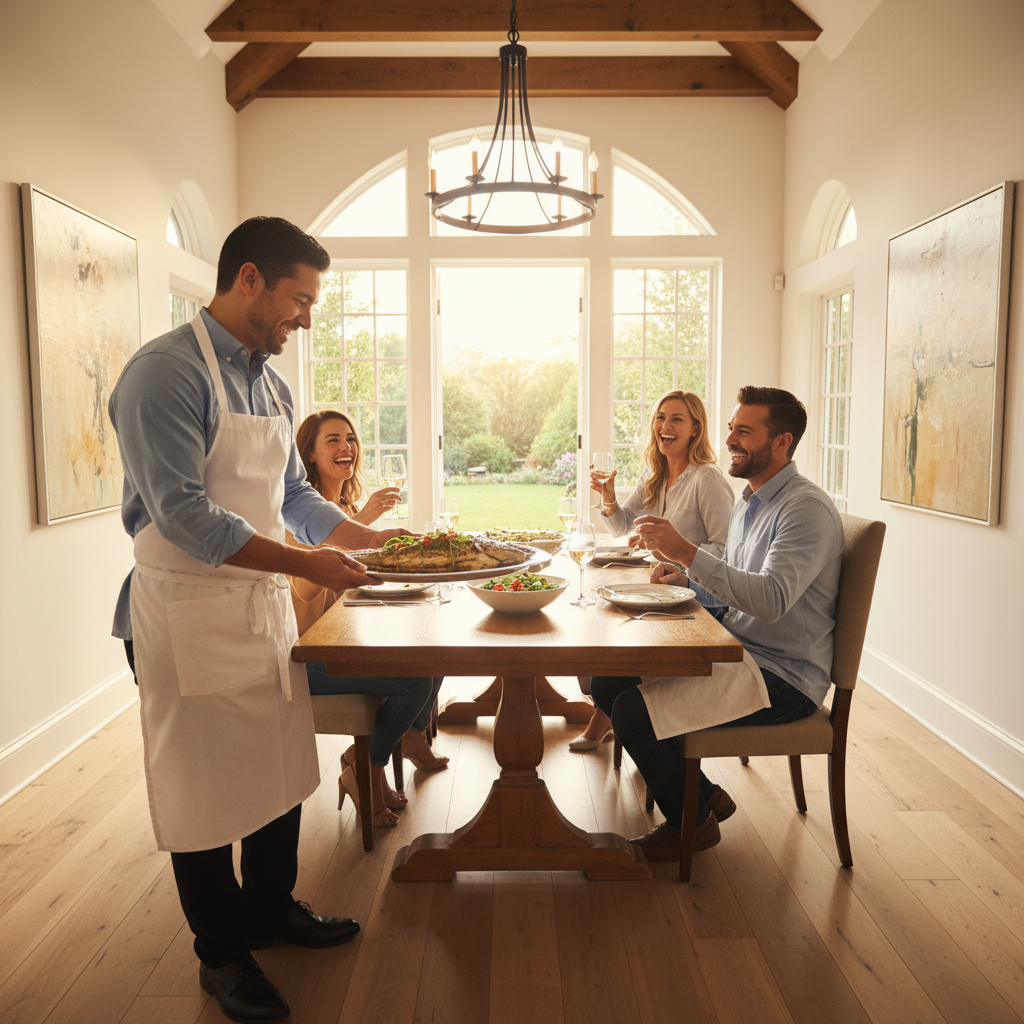
Table of Contents
Introduction
Imagine dedicating your life to creating exquisite culinary experiences, only to face unexpected setbacks that could jeopardize your business and livelihood. For personal chefs, who pour passion and precision into every meal prepared, having the right insurance coverage is not just an option—it’s essential. The unpredictability of kitchen accidents, client claims, and equipment damage can pose serious threats, making insurance a critical layer of protection so you can focus on what you do best: cooking.
In today’s fast-evolving culinary industry, personal chefs are gaining popularity for offering customized dining experiences and personalized menus tailored to clients’ tastes and dietary needs. However, this growing demand makes it increasingly important for personal chefs to understand the risks they face and how insurance can shield them from financial disasters. Studies have shown that over 60% of small businesses encounter unforeseen claims or liabilities during their operations, with many closing down due to lack of proper insurance protection. This makes proactive preparedness vital for anyone in the personal chef profession.
Whether you’re just starting out or have been catering intimate events for years, the thought of legal action from accidental injury or food-related illness can be alarming. Having comprehensive insurance transforms uncertainty into confidence, protecting you against claims of bodily harm, property damage, or errors in your service delivery. Many chefs also find peace of mind knowing they are safeguarded against costly lawsuits and repair expenses, enabling a more stable and trustworthy business relationship with clients.
Understanding the specific types of insurance relevant for personal chefs helps you make informed decisions that fit your unique business model. From general liability insurance that covers injuries and accidental damages to professional liability that protects against mistakes or negligence, the right mix of policies ensures you are protected comprehensively. For example, it’s helpful to first grasp the insurance basics before selecting the specific coverage that fits your culinary career.
What You’ll Learn in This Guide
This guide walks you through everything you need to know about insurance for personal chefs. You will discover the types of coverage you should consider, benefits of having insurance, and tips for selecting the right policy for your needs.
- Types of Insurance: We break down the common insurance types applicable to personal chefs, including general liability, professional liability, and property insurance. Understanding these will help you tailor your protection to cover all critical areas of your business operations.
- Benefits of Insurance Coverage: Learn how having insurance not only safeguards your finances but also builds client trust by showing your professionalism and commitment to risk management.
- Common Risks and Claims: Identify typical risks such as food safety issues, accidental property damage, and employee injuries that personal chefs usually face. This knowledge prepares you to anticipate and mitigate potential threats.
- Choosing the Right Policy: Get advice on evaluating your coverage needs, comparing providers, understanding policy details, and budgeting for insurance costs. Making well-informed decisions helps ensure you get the best value and protection.
As you read further, you will gain a detailed understanding of the insurance landscape tailored specifically for personal chefs. This insight empowers you to protect your culinary business against the many risks inherent in your profession. The following sections delve deep into each insurance type, describe the benefits, and spotlight real-world examples of claims to be aware of.
You will also find practical advice on how to select policies that suit your individual business setup and budget, ensuring you are neither underinsured nor paying for unnecessary coverage. By the end of this guide, your confidence in navigating insurance matters will be greatly enhanced, allowing you to focus fully on your passion for cooking without worry.
Preparing your business with the right insurance is a proactive step towards stability and growth. It helps you build stronger client relationships knowing you are covered should issues arise. Ready to learn how to shield your culinary career? Let’s dive in to uncover what insurance means for personal chefs and how to choose the coverage that fits your needs best.

For personal chefs, safeguarding their culinary business with the right insurance is a crucial step that often goes overlooked in the rush of meal preparation and client engagements. Insurance not only acts as a financial safety net but also offers peace of mind, allowing chefs to focus on their craft without the constant fear of unexpected liabilities. Understanding the various types of insurance relevant to personal chefs will help in making informed decisions that protect both their livelihood and reputation. As we delve deeper, we’ll explore essential insurance coverages, common risks associated with personal chef work, and practical guidance on selecting appropriate policies. This discussion continues from the introductory overview, setting the stage for comprehensive insights tailored specifically to the personal chef profession.
Types of Insurance Personal Chefs Should Consider
Personal chefs operate in unique environments that blend professional culinary skills with client-facing services, exposing them to several specific risks. To effectively manage these risks, several types of insurance coverage are highly recommended. These insurance options provide various layers of protection, from general liability to property damage and professional errors that could otherwise pose significant financial threats. Understanding each insurance type, what it covers, and why it is important helps personal chefs build a comprehensive safety net tailored to the nuances of their business. To fully grasp these options, it helps to be familiar with types of insurance relevant for service professionals.
General Liability Insurance is often considered the cornerstone of business protection for personal chefs. This insurance safeguards against claims related to bodily injury or property damage that might occur during a service engagement. It’s common for chefs to work in clients’ homes or event spaces where accidents like slips or minor property damage can happen. Having this coverage shields personal chefs from potentially costly legal claims. Additionally, professional liability insurance, sometimes called errors and omissions insurance, addresses claims stemming from mistakes or negligence in the execution of culinary services, such as mishandling special dietary requests that lead to client dissatisfaction or health concerns.
Key Aspects of Insurance Types
Here are the essential insurance coverages that personal chefs should consider to protect their professional and business interests:
- General Liability Insurance: This coverage protects against third-party bodily injury and property damages occurring during a chef’s service. For example, if a client slips on a wet floor during a cooking session and files a claim, this insurance will cover the legal defense and potential settlements.
- Professional Liability Insurance: Often essential for personal chefs, it covers claims related to errors, omissions, or inadequate work that results in client financial loss or injury. Examples include allergic reactions due to incorrect ingredient preparation or failure to meet contractual obligations.
- Property Insurance: This protects the chef’s business assets such as kitchen equipment, cooking tools, and portable appliances against perils like theft, fire, or accidental damage. It ensures that equipment repairs or replacements do not cause a financial setback.
- Additional Policies to Consider: Depending on business structure and staffing, workers’ compensation insurance for assistant chefs or hired help and commercial auto insurance if using vehicles for deliveries can also be relevant. Customizing coverage to individual needs is key.
Common Risks and Claims Faced by Personal Chefs
Operating as a personal chef involves various risk factors that arise from working intimately in clients’ homes or private venues, handling food preparation, and sometimes managing staff. Recognizing these risks helps chefs take proactive steps to mitigate potential claims and losses. Food safety concerns are paramount, as liability claims related to foodborne illness can have severe legal and financial consequences. Since personal chefs prepare customized meals, the risk of cross-contamination or improper food handling is a critical area to manage carefully.
Besides food-related risks, accidental property damage is another common exposure. Operating kitchen appliances in unfamiliar environments or transporting equipment increases the chance of damaging clients’ property, from surfaces to utensils and gadgets. Finally, if the personal chef employs staff or assistants, liability for employee injuries also becomes a concern. Understanding these specific risks enables the chef to choose appropriate insurance coverage and implement safety protocols that reduce mishaps.
Important Risk Considerations
Below are pivotal risks that personal chefs should be vigilant about to protect themselves and their clients:
- Food Safety and Contamination Risks: Preparing food that meets safety standards is critical. A mistake in handling allergens or inadequate cooking temperatures can lead to foodborne illness claims. Personal chefs must adhere to strict hygiene policies and food safety certifications to minimize this risk effectively.
- Accidental Property Damage: Damage to clients’ kitchen countertops, appliances, or personal belongings can occur inadvertently during service. Insurance covering accidental damage helps mitigate the financial impact of such incidents and reassures clients that their property is protected.
- Employee and Staff Injuries: For chefs who work with hired assistants or other staff, liability issues arise if an employee suffers injury on the job. Workers’ compensation insurance and adherence to workplace safety regulations are essential to manage this risk properly.
- Client Dissatisfaction and Professional Errors: Beyond physical risks, chefs may face claims from clients unhappy with the service or meal quality, such as failing to meet dietary restrictions or delivery timelines. Professional liability insurance offers protection against such claims, emphasizing the importance of clear contracts and quality control.

